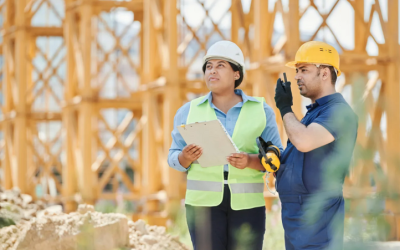This article originally appeared on Medium.
From the American Rescue Plan (ARP) to the Bipartisan Infrastructure Law (BIL) to the Inflation Reduction Act (IRA), billions of dollars are now set to flow to states and localities from the federal government. Following a pandemic that highlighted long-standing inequities, state and local officials have a historic opportunity to improve infrastructure, tackle the climate crisis, advance environmental justice, invest in historically marginalized communities, and promote broad and equitable economic opportunity.
In December, Results for America’s Good Jobs & Equity Project was pleased to have Paige Shevlin, Strategic Advisor for Infrastructure Workforce Development at the U.S. Department of Transportation (USDOT), share how state and local governments can creatively leverage BIL funding to connect people from historically marginalized communities and populations to high-quality infrastructure jobs. Here are six takeaways:
1. Include workforce and labor plans to strengthen your competitive grant applications. Sixty to seventy percent of major infrastructure grant applications now include some sort of workforce and labor plan, so it puts your jurisdiction at a disadvantage if you don’t include one. USDOT has developed a Transportation Workforce and Labor Plan Checklist to help state and local governments develop their plans. In reviewing grant applications, USDOT is looking for:
- Plans that show how jurisdictions will promote good-paying jobs and;
- Evidence that jurisdictions will connect workers from underrepresented communities and populations to those good jobs through things like local and economic hiring preferences and direct entry into apprenticeship programs.
2. Leverage state formula funds to invest in workforce development. While there is limited funding in BIL specifically for workforce development, highway formula funds that go to states are extremely flexible and can be used to support workforce development and supportive services for people in training programs. Competitive grants in BIL, such as RAISE Grants and Railroad Crossing Elimination Grants, can also be used to support workforce development for jobs on that specific infrastructure project.
3. Be strategic and engage the community in identifying needs and available resources. Take a step back and develop a strategy that is based on the needs of your community. To help with this, USDOT’s checklist includes a workforce landscape analysis exercise that can help you identify training programs that are working well for women, people of color, people returning from incarceration, etc. and identify where training programs need to be modified or built so they work well for those groups. State and local governments can identify needs, resources, and assets through community engagement and by identifying key stakeholders to partner with, such as community-based organizations. State and local governments have time to do this kind of strategic thinking and engagement before BIL-funded projects break ground, but the time to start is now.
4. Don’t forget about supportive services, such as child care, transportation, and affordable housing. One of the key goals of the Biden Administration’s implementation of BIL is to ensure infrastructure jobs are open to everyone, particularly people who have historically been left out, such as people of color, women, and people returning from incarceration. In some cases, jurisdictions may not need to build new workforce development programs to connect people to jobs — instead they may need to focus on whether people have the supports they need to complete existing programs. As noted above, highway formula funds going to the states can be used for supportive services, as can ARP dollars. For example, the City of Seattle is using ARP funds to increase retention and career advancement of apprentices in its priority hire program for public works construction projects. It is important for state and local governments to think about supportive services for both apprenticeship and pre-apprenticeship programs.
5. Regional collaboration is key for maximizing BIL funding. Larger transportation agencies typically have more capacity to develop workforce and labor plans than smaller agencies in the same region. By creating common training curricula and sharing lessons learned with one another, transportation agencies can maximize the BIL funding they receive. USDOT is looking to see more regional partnerships develop, with community colleges and local governments serving as the glue between different transportation agencies in a region. Local leaders in a region–particularly mayor’s offices and county executives–should explore how they can use their critical convening power to bring these stakeholders to the table to create or strengthen partnerships.
6. Be bold and innovative. While the Biden Administration has been clear in its overall goals for federal infrastructure investments — equity, job quality, and empowerment of historically marginalized people and communities — there is purposely a great deal of flexibility built into BIL grant programs. The Department encourages state and local governments to take advantage of this flexibility to be bold and innovative in how they use infrastructure dollars to benefit residents and workers. Specifically, don’t be afraid to include big, bold, and aspirational ideas in your competitive grant applications. After you submit your application, you can continue to refine your ideas and work out the nuts and bolts of implementation during the grant agreement process.
The Bipartisan Infrastructure Law provides a historic opportunity for state and local governments to repair and modernize our nation’s infrastructure and advance workforce equity and good jobs in the process. By taking a step back, being strategic, understanding community needs, and forming partnerships within and outside of government, state and local governments can deliver results for their communities, foster an inclusive economy, and seed long-term changes in how they operate. With thoughtful implementation, the impacts of federal infrastructure funding could endure well after the last dollar has been spent.






